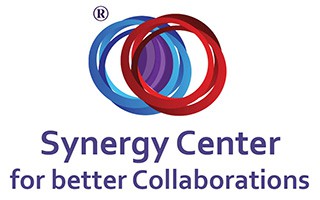Change management is crucial skill for a top-level manager or proprietor. Many organizations struggle during change processes, and this clearly indicates how important change management is. This is especially so when your organization is undergoing change in leadership, mergers and acquisitions, improvement of customer service, and assimilation of new technology, culture or work process.
These instances of change are when it’s important to assimilate the language of synergy in your organization. And as any other language, you must learn how to speak, behave and think synergistically. To acquire these language skills, you must be taught and practice them. Synergy language has terms that you must learn to change language in your organization. Let’s find out.
Synergy Terms
Every organization has its own culture – worldview and “way of doing things”. And so, organizations have their own languages. If you want employees and managers to assimilate synergy, they must adapt synergy terms to their organization’s language. Dr. Rami Ben-Yshai, in his book, Organizational Synergy: A Practical Guide – Recalibrate Interactions to Achieve Peak Engagement, Productivity & Profit, states:
When I work with organizations, I use concepts such as “purple”, which describes the interface between red and blue; “diversity,” “organizational synergy,” “flexible boundaries,” “blurring,” and “invasion,” and maintain each one’s unique meaning relative to the synergy approach. I integrate them into my speech, so that employees practice “synergistic thinking,” get accustomed to it, and behave accordingly.
The synergy speech brings in more respect, empowerment, containment and positivity in an organizational language. In other words, synergy language replaces expressions, which suggest negative criticisms. This contributes toward enhancing teamwork and networking. And this is possible because the synergy language flexes boundaries, reduces distance, de-emphasizes ego, promotes healthy competition, and encourages unity of purpose. Thus, the approach to problem-solving would be based on a culture in which team members listen, partner and dialogue.
Dialogue and Openness
Most organizations carry out change processes quietly, and so employees don’t usually have an idea that changes occur under their noses. Therefore, changes would catch them by surprise. While this is understandable, the issue of whether it’s right to involve employees in change processes is controversial.
For top-level managers, as for owners, it’s better for some information to remain secret, and that’s for a good reason. The fear of resistance and doubts makes organizational leadership to keep quiet. The problem with this move is that there would be some disquiet if employees learn of organization’s intentions.
Sharing information of upcoming changes can help defuse tension. It can be easier to deal with disquiet if you disclose information in advance. You don’t want your employees to feel “disconnected” from the process; you want to involve them. Give them an opportunity to air their views and grievances in an open forum, such as joint meetings or workshops.
Alternatively, you can use the “fanning out method” of information sharing in which information passes from the top down to the bottom hierarchically. If your organization is large and complex, there are communication tools. If you carry out changes secretly and suddenly, it would shock employees. With shock, comes fear and perception of threat, and that would worsen destructive forms of interactions.
A Case of a Transportation Organization
A public transportation organization was being privatized. Unexpectedly, this organization was open to the process. The vice president of the human resources department involved the leader of the employees union who attended every meeting. Later, the process would involve the employees. This move greatly helped in the implementation of changes.
This case indicates it can be helpful to obtain information about the perceptions or feelings about communication, boundaries and diversity from the employees themselves. You can obtain information by asking them questions. Avoid making assumptions based on hearsay, because misinformation can cause undesirable results.
Verify Information Sources – Don’t Assume
Something things aren’t that obvious, and so it’s important to verify the source of information yourself. This is because your perceptions or feelings, whether they be of boundaries or interactions, are subjective. What you think is false until you verify it’s true. To do that, use the interactions questionnaire to construct a picture of the real feelings and thoughts of employees and managers. Drawing up generalizations based on inadmissible facts can cause confusion and misinformation.
For example, don’t assume that because you feel that your interactions with another person is good, so that person feels the same. You may feel that helping out your colleague with duties is alright. To them, you’re invasive. It’s inadequate to model desirable behaviors based on synergy and to make clear statements. This won’t change how employees feel, interpret and adapt to the changes. That’s why cooperation is very important for success.
In Summary…
It’s important for managers and employees to express themselves in synergy terms, as this would contribute to mutual respect, positivity, involvement and containment during change processes. Share information about upcoming change processes with employees, and make sure you involve them. Avoid making assumptions about employee’s feelings or perceptions about boundaries and interactions.




